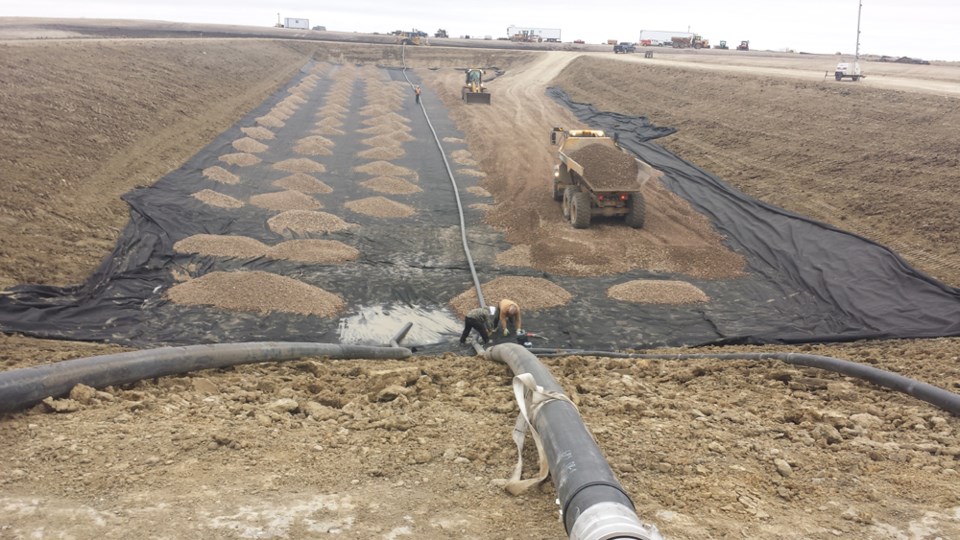International changes to recycling policy changes things in Humboldt
As of the end of 2017, the usual markets for recycling plastic bags and all other plastic film, including food wrap, cellophane and packaging, is gone, after China’s National Sword Program banned all plastic film from acceptable recyclables.
This means changes to the way that React does their recycling, says Lyle Ruf with React in Humboldt.
Currently, all recyclable materials are bailed and taken to the Loraas Recycle in Saskatoon.
With the changes in China, Loraas is also not taking in plastic bags, food wrap, cellophane or packaging to be recycled which means that these products will also not be taken in by React.
“There’s no market for them anymore,” says Ruf, “so even though they are technically still recyclable, there’s nobody that will take them to do it.”
While the bags are still recyclable, Ruf says there is no place that will take them because storage becomes difficult while waiting to ship off enough bags to make it worth the cost of shipping.
This may change down the road, he says, but alternatives are now a better option than continuing to use plastic bags.
The option now is for plastic bags and film to go in the landfill, but even that is not a viable place to put them, says Ruf.
They can travel for miles on a good wind, he says, but right now, the landfill is the only place for them to go.
Loraas recycling has informed React that all plastic bags and film must be out of their streams by March 1, says React CEO, Wendy Yaworski, which has proven time and energy intensive, especially the way their building is set up. They are asking people to eliminate the problem at the source.
“It would become cost and time prohibitive for the space we have in order to keep pulling this out and segregating it before we send it off,” says Ruf. “It’s much easier for us if we send it off already done.”
With the new program in China, they have also increased their standard for amount of contaminates allowed in the containers of recycling. Any containers that exceed that standard goes back to the country of origin.
This has increased the cost of recycling for a lot of countries, says Ruf, with hundreds of containers in the United States with no where to go.
“It’s going to all be resorted, recleaned, and re-bailed in order to send to China. And China’s going through each container with a fine tooth comb to find out whether they accept it or not.”
This stricter standard is keeping countries from treating China like their dumping ground, says Ruf.
This is having a ripple effect with many cities and communities reacting to these stricter policies by banning plastic bags all together, including Montreal and Victoria.
Loraas recycling has also started proposing a city wide ban to Saskatoon city council.
Even if the stores go back to paper bags, at least the paper is recyclable and more biodegradable than plastic bags, says Ruf.
The bottom line, they no longer want to see plastic bags at their landfills, says Yaworski.
Users could be paying double with new React load policy
June 1 is going to see changes at Humboldt landfill with the site transitioning to a transfer station.
REACT CEO Wendy Yaworski says that only half ton loads will be accepted at that site and larger loads will have to be taken directly to the new LeRoy landfill site.
Insecure loads, meaning any load that is not secured in a way to keep garbage from flying off the vehicle, will be charged double at either site, says Yaworski, and React sites will have a supply of tarps available for people to purchase.
“Throughout the year, we’ve seen anything and everything in the ditches. We’ve seen box springs, mattresses, stoves, fridges, deep fridges. And people will lose them and just leave them. They know they’ve lost the item, they just won’t go back.”
Lyle Ruf with React in Humboldt says that it is the landowners who are being impacted by flying garbage. With the secured loads being a cheaper option for people taking loads to the landfill, he hopes people will stop making it someone else’s problem.
“It just becomes good policy for everybody; if you want to take your trash there, make sure it’s secure and that doesn’t cost you a thing. If you don’t care, it costs you more.”
The React site is owned by 31 urban municipalities and 16 RMs in the area, serving a population of 26,286, and if React staff is out clearing debris from the ditches, that means that users will be paying for other people’s garbage, says Ruf.
There is a cost to doing this, says Yaworski,and the cost has to be passed on, in the end to taxpayers.
The React board is looking into changing rates for landfill use, with Yaworski estimating that that could come into play April 1.
Even with truck and landfill cells being big costs on their radar, Yaworski and Ruf say that React is in a good position with the Cudworth landfill being brought up to standard with a new landfill cell and the LeRoy landfill set to open June 1 (http://humboldtjournal.ca/news/local-news/leroy-landfill-set-to-open-june-2018-1.23087917), some communities are having their landfills being shutdown and decommissioned with a million dollar price tag and a large price tag for waste disposal.
“They’re paying for their solid waste to be transported, some of them can be up to 150 kilometres that they’re hauling that and there is a huge cost attached to that.”

.png;w=120;h=80;mode=crop)


